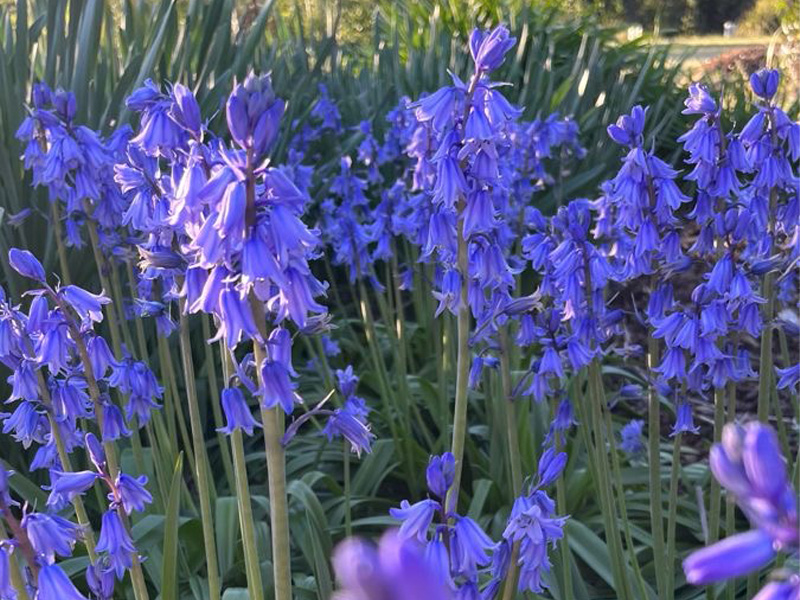
Appearance: Hyacinth plants are small, generally about 10-30 cm in height. Underground bulb, spherical or oblate, covered with membranous scales. The leaves are basal, linear or lanceolate, thick in texture, mostly green in color, and have obvious parallel veins on the surface of the leaves. The stem of the flower is pulled from the leaf cluster and grows upright, with many small flowers densely planted on it, forming a raceme. The flowers are bell-shaped, with 6 petals, spreading out, the common colors are blue, purple, white, etc., the petals are usually with dark stripes or spots, and the flowers have a strong aroma.
Plant family Genus: Lily family hyacinth is a perennial herb.
Common name: Ocean Narcissus, five color Narcissus, etc.
Extraction parts: mainly flowers, flowers in the volatile components and effective substances content is high.
Extraction method: Usually using steam distillation method, the use of steam to bring out the aromatic components of flowers, through condensation, oil and water separation steps to obtain essential oil; Solvent extraction can also be used to dissolve aroma substances in flowers by a specific solvent, and then remove the solvent to obtain the extract.
Main chemical composition: Contains volatile oil, including benzene ethanol, benzyl benzoate, linalool and other components, these substances give hyacinth unique aroma. In addition, it also contains flavonoids and some alkaloids and other ingredients.
Main origin: Originally from the Mediterranean coast and Asia Minor, it is now widely cultivated in Europe, North America and other places. In China, it is mainly introduced and cultivated in some flower planting bases and botanical gardens.
Aroma: With a strong floral tone, the aroma is sweet and elegant, with a hint of fresh breath, giving people a warm and romantic feeling.
Aroma concentration: The aroma is relatively rich and volatile, and the fragrance can be obviously smelled within a certain range, especially when the flowers are in full bloom, the aroma is more intense.
Suitable essential oils:
Lavender essential oil: Paired with hyacinth essential oil, it can add a romantic floral smell while soothing and relaxing. It can be used in aromatherapy to help relax the body and mind and improve the quality of sleep.
Rose essential oil: The combination of the two can create a more charming and romantic atmosphere, which can be used in skin care products to moisturize the skin and bring pleasant sensory enjoyment.
Rosemary essential oil: With wild hyacinth essential oil, it can increase the aroma layer on the basis of refreshing, suitable for use in work or study, and improve the mental state.
Efficacy characteristics: It has certain antibacterial and anti-inflammatory effects, and its extract has inhibitory effects on some bacteria and fungi in vitro experiments; Can relieve emotions, its aroma can relieve anxiety, tension and other bad emotions, play a relaxing role; In traditional medicine, there are also certain expectorant and cough relieving effects.
Common application:
Muscle conditioning: Diluted hyacinth oil can be used for massage, its soothing aroma helps to relax the body and mind, indirectly relieve muscle tension, but due to its toxicity, the amount and use need to be strictly controlled.
Immune system: Inhaling the aroma of hyacinth through aromatherapy can regulate emotions and enhance the body's immunity to a certain extent; However, it is not recommended to take it internally for immune system conditioning because it contains toxic ingredients.
Nervous system: The aroma of hyacinth can stimulate the olfactory nerves, make people feel happy, relieve stress and fatigue, and play a relaxing and regulating role in the nervous system. It can be made into aromatherapy products and used indoors to help improve your mental state.
Use contraindication: hyacinth plant is toxic, especially the bulb is highly toxic, after ingestion may cause dizziness, vomiting, diarrhea and other poisoning symptoms, even life-threatening in serious cases, so absolutely prohibited to eat; When using hyacinth essential oil, the dosage should be strictly controlled to avoid large amounts of skin contact, so as not to cause allergic or toxic reactions; Pregnant and breastfeeding women should avoid exposure to avoid adverse effects on the fetus or baby.
